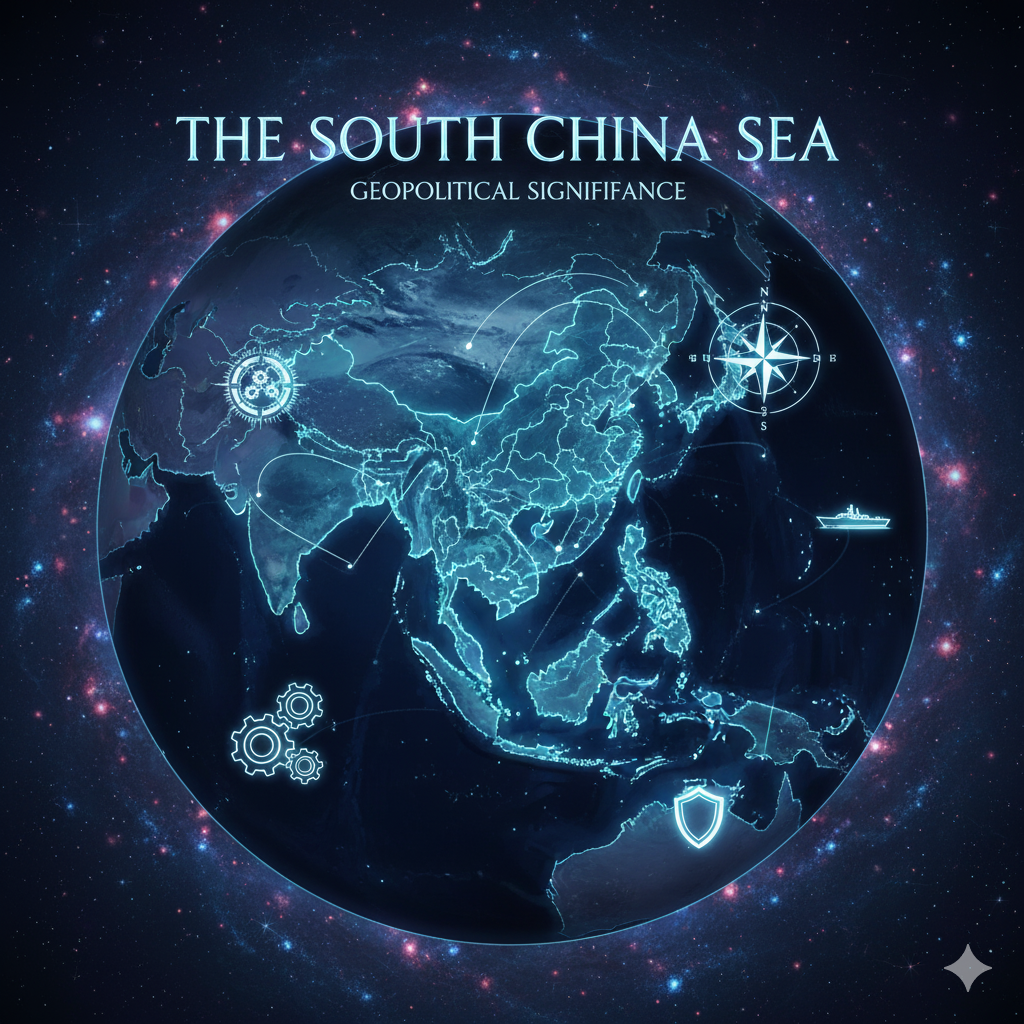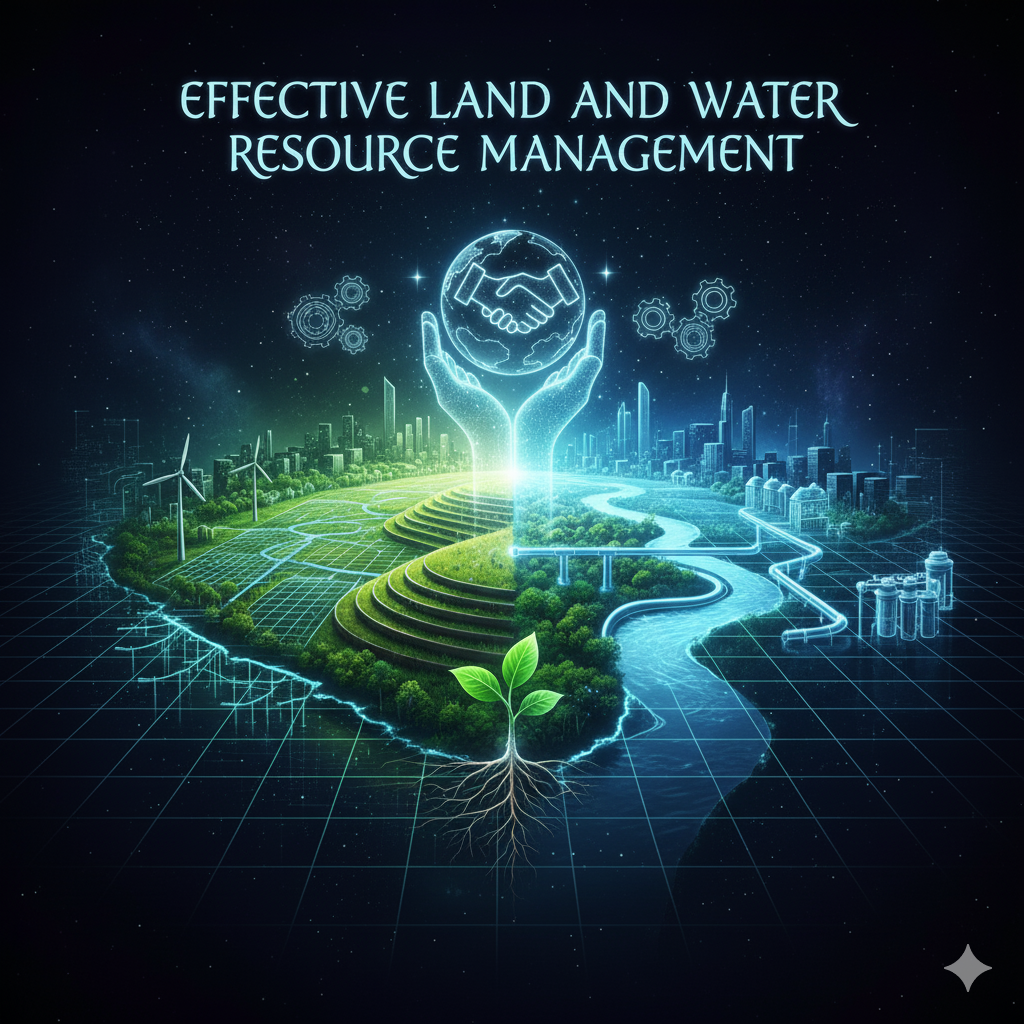Introduction
Water has been one of the most critical natural resources shaping human civilization, particularly in South Asia, where rivers have historically supported dense populations, agriculture, and trade. Among these rivers, the Indus system has been of paramount importance, sustaining millions of people across present-day India and Pakistan. However, the political partition of the Indian subcontinent in 1947 transformed river waters into a transboundary resource, creating disputes that culminated in one of the most significant water-sharing arrangements in modern history—the Indus Waters Treaty (IWT) of 1960.
The treaty, brokered by the World Bank, has often been described as a model of cooperation between two rival states. Yet, in the context of ecological challenges, climate change, and volatile India–Pakistan relations, its implications need fresh scrutiny. This essay presents an account of the Indus Water Treaty, examining its ecological, economic, and political implications, while situating it within the dynamics of changing bilateral relations.
Historical Background of the Indus Water Treaty
The Partition and the Water Dispute
The partition of British India in 1947 not only divided territory and population but also fragmented the river system of the Indus basin. The six major rivers—Indus, Jhelum, Chenab, Ravi, Beas, and Sutlej—originated in India but flowed downstream into Pakistan. This created a dependency where Pakistan, primarily an agrarian economy, relied on upstream India for its water needs.
In April 1948, India stopped water supplies from canals in East Punjab to Pakistan, highlighting the vulnerability of Pakistan’s irrigation-dependent agriculture. A temporary agreement allowed water flow to resume, but the crisis underlined the urgency for a long-term resolution.
Negotiations and the Role of the World Bank
Prolonged negotiations from 1952 to 1960, facilitated by the World Bank, led to the Indus Waters Treaty. It was signed on 19 September 1960 in Karachi by Indian Prime Minister Jawaharlal Nehru and Pakistani President Ayub Khan, with World Bank President Eugene Black as a signatory.
Provisions of the Indus Water Treaty
The treaty divided the rivers into two categories:
- Western Rivers (Indus, Jhelum, Chenab)
- Allocated to Pakistan.
- India was permitted limited use for non-consumptive purposes such as hydropower generation, navigation, and domestic use, provided these did not alter the flow significantly.
- Eastern Rivers (Ravi, Beas, Sutlej)
- Allocated to India.
- India gained full rights to utilize these waters for agriculture, storage, and hydropower.
Other Provisions
- Transition Period: India agreed to provide financial assistance for the construction of replacement canals and reservoirs in Pakistan.
- Permanent Indus Commission: Established to resolve disputes, comprising one commissioner from each country.
- Dispute Resolution Mechanism: Included negotiation, neutral expert review, and arbitration through international forums.
The treaty was considered fair at the time, though some scholars argue that Pakistan received a larger share of waters, while India bore limitations despite being the upper riparian state.
Ecological Implications
1. Alteration of River Ecosystems
- The diversion of the eastern rivers for irrigation and hydropower in India has significantly altered the ecological flow patterns.
- Reduced flow in certain stretches has led to declining aquatic biodiversity, impacting fisheries and riparian communities.
2. Wetland and Delta Degradation
- In Pakistan, the reduced flow of the Indus towards its delta in Sindh has led to saline intrusion from the Arabian Sea.
- Wetlands such as Keenjhar Lake and Indus Dolphin habitats are under ecological stress.
3. Climate Change and Glacial Melt
- The Himalayas feed the Indus system, but glacial retreat and unpredictable monsoon patterns threaten long-term water availability.
- Seasonal variations are becoming more erratic, affecting both upstream and downstream ecological balance.
4. Environmental Costs of Infrastructure
- Construction of large dams, barrages, and canals in both India and Pakistan has altered sediment flow, reduced soil fertility, and increased risks of siltation.
Economic Implications
1. Agricultural Dependence
- Pakistan: Nearly 90% of its agriculture depends on the Indus basin, making the treaty vital for food security. Punjab and Sindh provinces are particularly dependent.
- India: The eastern rivers have been extensively developed for irrigation in Punjab, Haryana, and Rajasthan, supporting the Green Revolution.
2. Hydropower Development
- India has utilized the treaty provisions to build hydropower projects on western rivers (e.g., Kishanganga, Baglihar), which often become contentious with Pakistan.
- Hydropower contributes to India’s energy security but creates suspicion in Pakistan over potential water manipulation.
3. Economic Interdependence and Tensions
- While the treaty ensures water supply stability, disputes delay projects, create mistrust, and sometimes impact bilateral trade.
- Pakistan accuses India of using the treaty’s loopholes to maximize its benefits, while India argues that Pakistan exaggerates concerns for political leverage.
4. Cost of Infrastructure
- Both countries spend heavily on canal networks, reservoirs, and dams, which require constant maintenance and investment.
- In Pakistan, waterlogging and salinity from excessive canal irrigation have reduced agricultural productivity, adding economic stress.
Political Implications
1. Symbol of Cooperation
- The treaty is one of the few agreements between India and Pakistan that has survived wars (1965, 1971, Kargil conflict, and ongoing border tensions).
- Its resilience is often cited as proof that water diplomacy can transcend political hostility.
2. Source of Disputes
- Despite cooperation, the treaty is also a frequent flashpoint.
- Pakistan has objected to India’s projects like Kishanganga (Jhelum tributary) and Ratle (Chenab tributary).
- Disputes have escalated to international arbitration multiple times, showing limitations of the bilateral mechanism.
3. Strategic Leverage
- In recent years, Indian leaders have hinted at reconsidering the treaty as a response to terrorism emanating from Pakistan.
- This raises questions about the securitization of water and its use as a political bargaining tool.
4. International Dimensions
- The World Bank’s continued involvement in arbitration highlights the global significance of the treaty.
- Any breakdown would attract international scrutiny, affecting India and Pakistan’s global image.
The Treaty in the Context of Changing Bilateral Relations
Post-2016 Developments
After the Uri terrorist attack (2016), India’s Prime Minister stated, “blood and water cannot flow together,” signaling the possibility of tougher water policies. India has since expedited construction of projects on western rivers, raising Pakistani concerns.
Pakistan’s Security Concerns
Pakistan perceives Indian water projects as potential threats to its national security, fearing they could be used to control or reduce water flows during critical periods.
Indian Perspectives
India argues it has not fully utilized even its entitled share of waters, particularly on the eastern rivers, much of which flows into Pakistan unused. This has triggered renewed domestic debates about maximizing water use.
Emerging Geopolitical Context
- China Factor: China controls the upper reaches of the Indus tributaries in Tibet and has increasing strategic ties with Pakistan.
- Afghanistan Factor: Kabul also shares tributaries with Pakistan, creating a wider regional dimension.
- Climate Change: Shared vulnerabilities could either fuel cooperation or intensify rivalry.
Challenges and Future Prospects
Challenges
- Climate Change: Uncertain glacial melt and rainfall patterns may render the treaty’s rigid allocations inadequate.
- Rising Populations: Both countries face mounting water demand, increasing stress on limited resources.
- Technological Projects: New hydropower and irrigation technologies may test treaty interpretations.
- Trust Deficit: Deep political mistrust reduces the scope for cooperative management.
Future Prospects
- Strengthening the Indus Commission: Enhanced data-sharing and joint monitoring could reduce disputes.
- Incorporating Environmental Concerns: Revisiting the treaty to include ecological flow requirements may help conserve ecosystems.
- Regional Cooperation: Expanding the dialogue to include climate adaptation, flood management, and drought mitigation could transform water into a medium of cooperation.
- Leveraging Technology: Use of satellite data, real-time monitoring, and joint hydrological studies can foster transparency.
Conclusion
The Indus Waters Treaty remains a landmark in transboundary water governance, having withstood the turbulence of India–Pakistan relations for over six decades. It has ensured a stable framework for water sharing, supporting agriculture and livelihoods for millions. However, the ecological stresses of climate change, the economic imperatives of water-intensive development, and the political tensions of bilateral rivalry are testing its resilience.
In the changing context, the treaty’s significance lies not only in dividing waters but also in offering a platform for dialogue. For India and Pakistan, the future lies in moving from water division to water cooperation, integrating ecological sustainability with economic growth and political stability. Only then can the Indus, cradle of one of the world’s oldest civilizations, continue to nourish the subcontinent in the 21st century and beyond.




